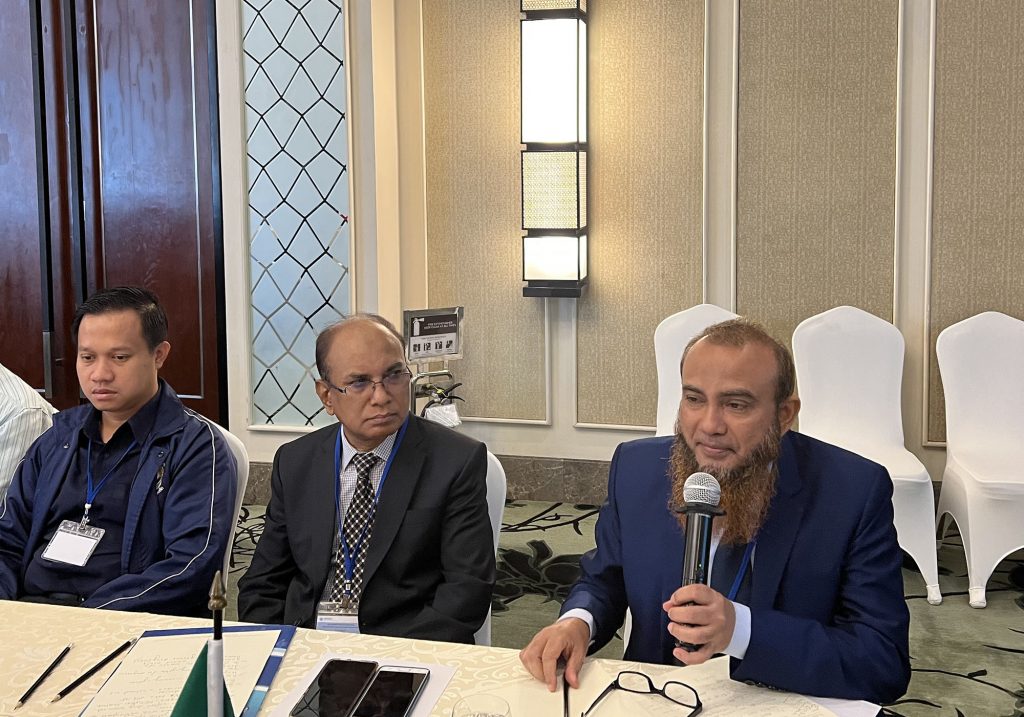East and Southeast Asian drug experts meet to discuss responses to emerging synthetic drug threats
Manila (Philippines), 31 August 2023 – The synthetic drug market in East and Southeast Asia has expanded and diversified in recent years. While methamphetamine supply remains high, with nearly 151 tons seized in 2022, the market for other synthetic drugs, such as ketamine, has also grown significantly. A record 27.4 tons was seized in the region in 2022, an increase of 167 per cent from the previous year.
To respond to the ongoing challenge and evolution in the regional synthetic drug market, the UNODC SMART Forensics Programme held a regional meeting gather experts from law enforcement, public health, and drug forensics from ASEAN member states and the East Asia, including China, Japan, and the Republic of Korea, and the World Customs Organization’s Regional Intelligence Liaison Office Asia Pacific to share latest developments and discuss strategies to address the drug situation. Representatives from Australia, Bangladesh, India, and the United States also participated as countries that are impacted by the drug situation in East and Southeast Asia.

“The drug situation in the Philippines has exacerbated in recent years and our law enforcement agencies have seized increasing amounts of methamphetamine year on year, predominantly produced from the Golden Triangle. We also have drugs entering the local market from other regions as well, impacting drug use in our country,” remarked Secretary Catalino S. Cuy, Chairman of the Dangerous Drugs Board (DDB) of the Philippines. “This means that regional and interregional cooperation are more important than ever, as we work together to take the drug problem. Supply reduction has to go hand in hand with prevention and demand reduction.”
The emergence of new synthetic drug products, such as ‘happy water’, which contain multiple substances, and varied synthetic drug tablets containing new psychoactive substances (NPS) have also added complexity to the situation as these multi-substance products pose significant danger to the health and safety of communities. Early warning mechanisms are necessary at the national and regional level so that countries in the region are informed of emerging drug threats and can respond in a timely manner.

“NPS remain a concern in the region with new NPS continuing to emerge despite legal responses, including the recent class scheduling of synthetic cannabinoids in China,” noted Meng Xin. “It is important to quickly share information on these new substances, as well as share identification methods, to help build the capacity of drug analysis laboratories in the region.”

Tackling the regional drug problem requires a multidimensional approach, including developing early warning mechanisms, health responses, counternarcotic interventions, and international cooperation throughout East and Southeast Asia.
“UNODC, through the SMART Forensics Programme, will work together with countries in the region to address the drug problem by providing science-led capacity building, including drug detection, analysis, early warning, and chemical disposal, as well as more rapidly communicate emerging global and regional drug-related threats,” said Tun Nae Soe, Interregional Coordinator of the SMART Forensics Programme with UNODC.
Click here to learn more about UNODC’s Regional Programme for Southeast Asia
Click here to learn more about UNODC’s work to address drug and precursor challenges in the region
Click here to learn more about UNODC’s SMART Forensics Programme




